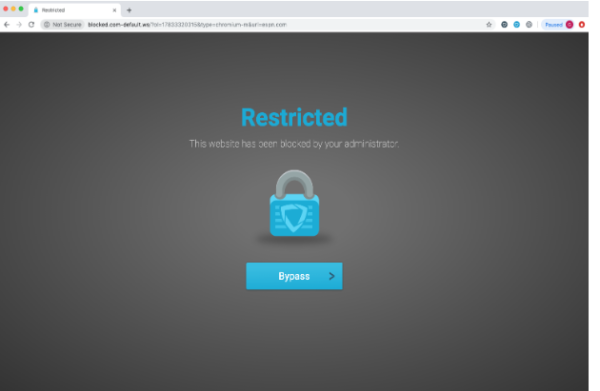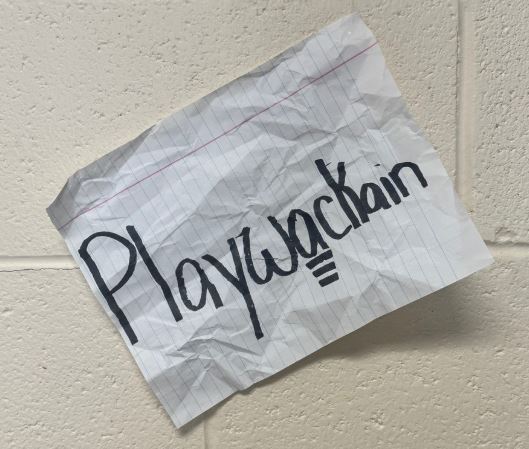Guarding against GoGuardian
By Ayden Dillon

Did you know that your teachers can monitor your screen via GoGuardian even after school hours? The unsettling truth is that you might not.
Redwood High School’s newspaper, The Redwood Bark, paints a disturbing picture of how GoGuardian can monitor you without you even knowing it.
In January 2025, Gia Meyers, a Junior attending Redwood High School, was away for a softball tournament in Las Vegas. She had completed her homework for the day and proceeded to start up Netflix on her personal computer.
“I was watching Netflix on the side after I finished my homework,” Meyers said, “and [my teacher] closed my tab.”
Even from several states away, outside of school hours, Meyers’ teacher could access her laptop. Upon sharing the story with her classmates, she was horrified to find that other students all shared similar experiences.
But how exactly does it work? GoGuardian doesn’t monitor a specific device; rather, it monitors an account. Therefore, if you were to add your school account to your home computer, as many have done, that means your teachers (as long as their session is active) can collect all of your browsing data, flag your activity, apply restrictions on your browser, and filter your searches.
GoGuardian’s own motto states that the service is to be used for “classroom management,” but the control of an absent student’s laptop, used on her own time, clearly stretches beyond the intended purpose. Yet, despite the removal of teachers’ ability to monitor students after school hours, the invasion of privacy doesn’t end there.
The Tamalpais Union High School District, the district in which the Meyers incident occurred, still refuses to enable the “Exclude” feature of GoGuardian that allows a student to be exempt from a GoGuardian session when absent. Meaning that despite some minor improvements, the students can still be monitored at home.
If GoGuardian can control a student’s personal laptop, it’s worth asking: what else can it control?
The same program that gives teachers control over Chromebook tabs also adds one typically unnoticeable feature. GoGuardian, on top of its monitoring use, also filters all searches, scanning for particular keywords to sort out what should be shown. While, on the surface, its use to remove any overly violent or sexual content from school computers seems positive, this is where we discover the problem goes beyond privacy and becomes a problem of censorship.
The company has a history of flagging any content that is related to racial, controversial, or LGBTQ+ topics, even when the topics flagged were completely innocuous.
This has been thoroughly researched in, “Student Monitoring Tools Should Not Flag LGBTQ+ Keywords” by the Electronic Frontier Foundation (EFF) and “GoGuardian: A Red Flag Machine By Design” by Dave Maass, Daly Barnett and Jason Kelley. These articles highlight specific examples of the company’s filter failing.
The mention of words like “lesbian” or “gay” was enough to flag the page. The issues only spread from there. Teens were unwillingly outed to unsupportive adults about belonging to LGBTQ+ groups due to GoGuardian, resulting in direct harm to young people’s mental well-being.
“Numerous reports show that the regular flagging of LGBTQ+ content creates a harmful atmosphere for students, some of whom have been outed because of it” Jason Kelley stated in the EFF article. “This is particularly problematic when school personnel or family members do not understand or support a queer identity.”
GoGuardian’s harm extends past its filters and into its phrasing. As stated by the official website, GoGuardian blocking the content means that it deems all LGBTQ+ topics “harmful.”
Following the complaints in 2023, GoGuardian has since made steps to improve its filter, removing specific LGBTQ+ terms from its list of keywords to look out for, but the system is still far from perfect.
Many students report that GoGuardian will block educational content regularly, especially pertaining to Health Education. These instances demonstrate that the overarching issue is yet to be solved.
But LGBTQ+ groups aren’t the only ones affected by GoGuardian’s shortcomings.
In a study conducted by WIRED they found that GoGuardian would block specific news articles, but not others, leading to a concerning conclusion: the filter was deciding what news students are and are not able to access, including historical accounts of the Holocaust. Restricting one’s access to major world news to articles cherry-picked by a filter cripples a student’s ability to create their own (well-informed) opinions.
When putting it all together, it’s no wonder that schools are switching to GoGuardian alternatives like Blocksi.
However, it should be stated that these substitutes come with their own problems. Blocksi, as stated by WIRED, also has a filter that blocks educational resources. But unlike GoGuardian, Blocksi’s filter wasn’t blocking LGBTQ+ content; it was blocking educational resources regarding current events. It prevented users from accessing important information regarding women’s rights, abortion, child labor, and even Supreme Court cases.
GoGuardian claims to safeguard learning, but by forcing people to choose between education and privacy, or between knowledge and censorship, it’s actively harmful to the school system.
Whether it’s GoGuardian, Blocksi, or whatever service pops up next, the real question is whether or not schools will have a say in how our browsing is controlled and monitored. After all, if these programs are meant to aid us, then shouldn’t we be the ones shaping them?
GoGuardian: An indispensable tool
By Ethan Giambrone
If you were to walk into any given public school in America today, you would find over half of them using GoGuardian.If you were to ask any of the approximately 15.3 million students who use it, you would find that the majority are quick to share numerous negative comments about the software, primarily expressing concerns about privacy invasion. However, in a modern classroom where a majority of the curriculum is online, GoGuardian is a necessity for teachers to ensure students are on task and are comprehending the information they’re receiving.
In today’s schools, one of the most persistent issues faced is student distraction. While on a podcast with the American Psychological Association (APA), a professor at UC Irvine named Gloria Mark, PhD, shares that people’s attention spans have shrunk significantly. Notably using a study that shows that the median attention span of people using online tools has shrunk from an average of 75 seconds to an average of 47 seconds in recent years.
I mention this study to state the point that even though online materials and resources are very helpful in today’s education, they pose the hassle of teachers keeping students engaged. GoGuardian resolves this issue by giving teachers real-time views of students’ screens, which allows for prompt yet non-confrontational correction. GoGuardian also has other useful features, such as the ability to open specific tabs and use “scenes” to only permit students to visit the sites they’re supposed to be on. This not only saves students the potential embarrassment of a confrontation in front of others, but also saves a considerable amount of class time; the company shares a figure of up to a week of instructional time being saved by teachers who use it.
Neshaminy Staff reflect these praises. When asked about the platform, Mrs. Coe, a counselor, said, “I think its been helpful, because sometimes if students are searching things that are concerning it helps us notice students that need help. I know teachers use it differently, but us counselors use it if someone was to search suicide, it flags it and we get alerted.”
Mrs. Cimohowski, an assistant principal, also had positive thoughts on the platform. She is quoted as saying, “I think it’s been helpful, because sometimes if students are searching things that are concerning, it helps us notice students that need help.
In addition to classroom management, GoGuardian plays a role in supporting student welfare. In today’s world, potential warning signs of self-harm, suicide, and violence often appear online. GoGuardian uses machine learning to flag concerning activity across searches, documents, and apps. When concerning activity is flagged, GoGuardian immediately alerts designated school personnel, providing context for a prompt and potentially life-saving intervention. It has been found that the platform has saved the lives of over 18,600 students. It has also been found that counties using the software as of 2022 had, on average, a 26.4% lower suicide rate than counties not using the software. GoGuardian is more than just a monitoring tool; it has and will continue to save lives.
GoGuardian also serves as a tool for building personalized learning programs. The software provides educators with data-driven insights into student behavior, activity, and other relevant information. Through this, teachers can not only mold their lessons to help students in need, but also evaluate the overall success of the lessons that were taught. This ability to assess and respond to students’ individual needs ensures that every student has the opportunity to succeed in and out of the classroom.
In conclusion, GoGuardian is not the privacy-invasive nuisance many believe and describe it to be. GoGuardian is an indispensable platform for educators and students alike in today’s classroom. It saves time, streamlines assigned work, allows for adaptive learning for students who may need it, and even saves lives.





